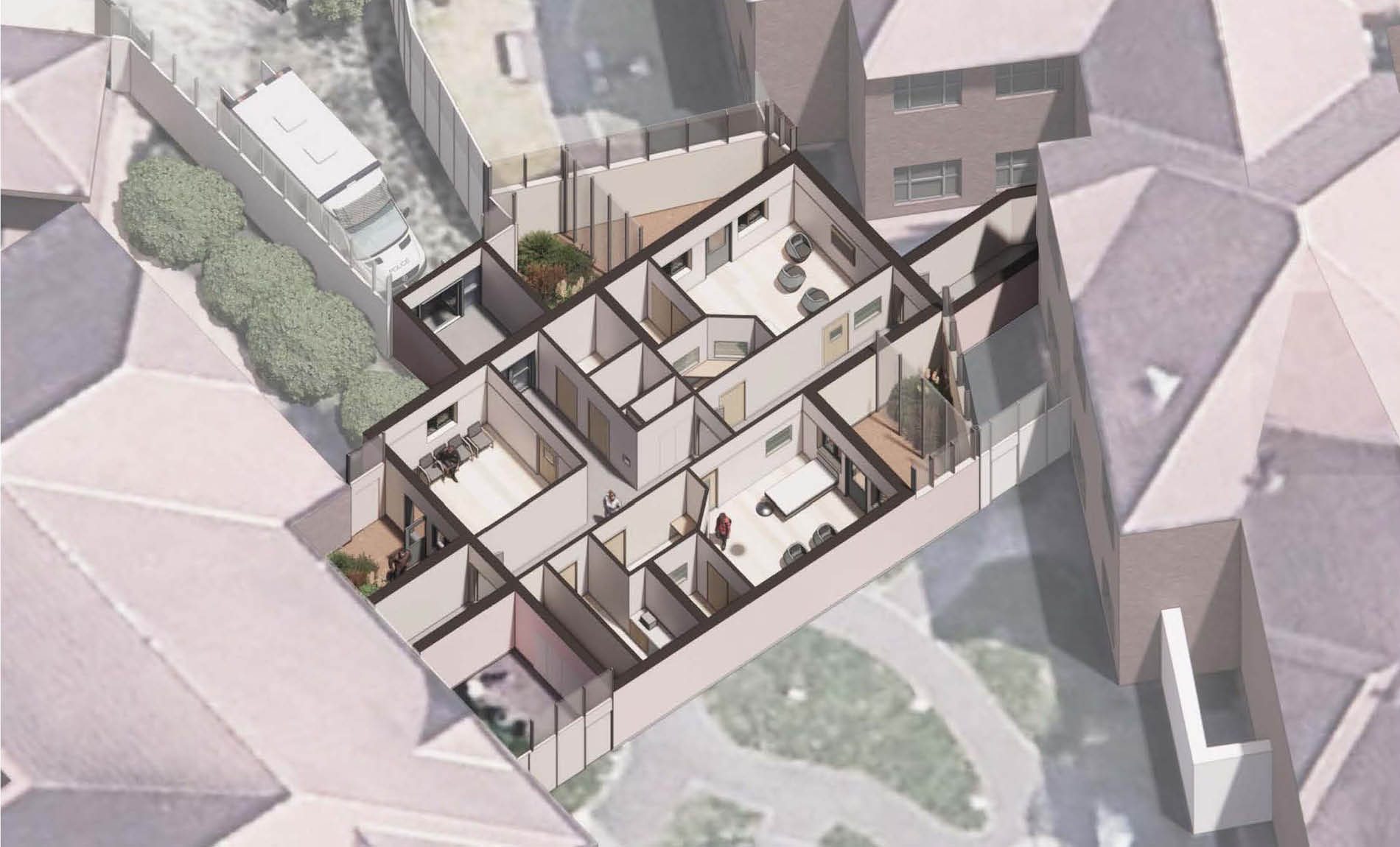The mental health estate
The recent report from NHS Confederation released in November looked at the current state of the mental health estate, stating that “Time and again our members assert that many parts of the mental health estate are not fit for purpose. NHS Digital data for 2021/22 shows that 15.5 per cent of mental health and learning disability sites in England were built pre 1948.”
“This affects patient care. Old, dilapidated estates are not therapeutic environments and do not encourage recovery, and therefore length of stays are longer. The 2018 review of the Mental Health Act stated that ‘Poorly designed and maintained buildings obstruct recovery by making it difficult to engage in basic therapeutic activities (getting outdoors or social interaction with others) and contributing to a sense of containment and control’.” (Source: NHS Confederation: Investing to Save, November 2023).
A place of safety
Mental health spaces need to be designed to serve as sanctuaries, offering solace and support to individuals. Among these spaces, the design of a Section 136 (s136) space has a critical role, navigating a balance between the need for a robust mental health space and thoughtful – and therapeutic – mental health design.
Section 136 of the Mental Health Act grants the authority to detain individuals in public places temporarily if they appear to be experiencing a mental health crisis and are deemed a risk to themselves or others. These dedicated spaces are intended for assessment rather than treatment. However, their design profoundly impacts the experience of those detained.
Often stark, sterile, and lacking in warmth, these mental health environments can exacerbate distress for those already in vulnerable states. This setting, combined with the emotional turmoil individuals are experiencing, underscores the need for a more compassionate, therapeutic, and supportive design approach.
“Old, dilapidated estates are not therapeutic environments and do not encourage recovery, and therefore length of stays are longer.” – (Source: NHS Confederation: Investing to Save, November 2023).
Designing spaces for mental health
Creating mental health spaces that prioritise well-being requires a multifaceted approach between healthcare architects and planners, NHS Trusts (including the teams that will be using and working within the spaces) and individuals with lived experiences.
Firstly, it involves architectural elements that promote a sense of safety, dignity, and comfort. Soft lighting, calming colours, and comfortable furnishings can contribute to a more soothing environment. Incorporating nature, such as green spaces or natural light, can also foster a healing atmosphere.
The layout and functionality of these spaces are also crucial. Designing flexible areas that cater to individual needs while maintaining privacy, for example. Separate rooms for assessment, therapy, and calming activities offer diversity in the provision of care. Additionally, integrating sensory elements like aromatherapy or soothing sounds can aid in relaxation and stress reduction.
A robust and therapeutic environment
Designed by Health Spaces, this Section 136 Suite (pictured) offers a place of safety, security and comfort, where individuals can be assessed by professionals in an appropriate setting. These purpose-designed suites have been created for integration into existing community, acute and multi-service sites. They allow for maximised safety, security, privacy and dignity.
Innovations include generous rooms with lounge and bed areas, a shared observation base with maximised observation options, a therapeutic environment with natural light and remote blind controls, and options for secure courtyard access and a secure drop-off area within a robust, safe and therapeutic modular.
Configuration and layout can be made bespoke to suit a NHS Trust’s individual requirements, with grouped installation to achieve multiple assessment room arrangements.
Going beyond S136 spaces
Beyond Section 136 spaces, the broader mental health landscape benefits from thoughtful design that is approached from a multi-disciplinary angle – the healthcare design process involving all stakeholders from the beginning of the design process.
In-patient facilities, outpatient clinics and community centres all play roles in supporting mental wellbeing. Research shows that by incorporating elements of autonomy, privacy and empowerment into these spaces can help individuals feel more in control of their treatment journeys.
A holistic approach considers the cultural and social aspects of mental health. Designing spaces that respect diverse backgrounds, beliefs and experiences fosters inclusivity and ensures that individuals feel understood and accepted within these environments.
Ultimately, mental health design is more than aesthetics; it’s a statement of care, dignity, and respect. Creating spaces for mental health that acknowledge this can ensure the design of these healthcare spaces positively impacts the wellbeing of individuals, contributing significantly to their journey toward recovery and resilience.
Designing better mental health spaces | Webinar
How do we balance the need for robust and durable spaces for patients with the creation of a therapeutic healthcare environment? What measures can be taken to guarantee that the design of mental health spaces caters to the needs of both patients and staff? How can we drive continuous improvement in design in mental health?
Join us in our next webinar which discusses how we we can design better environments for mental health.
Find out more & save your place.



